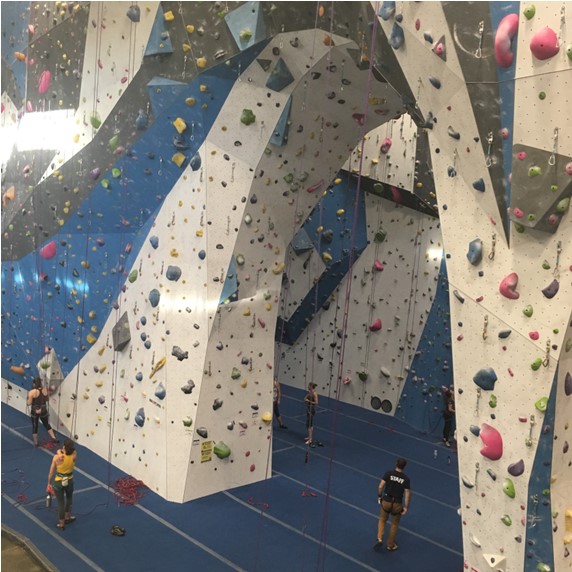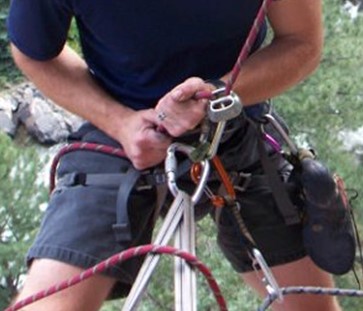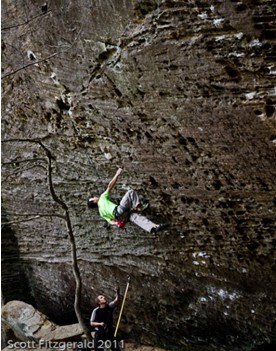Climbing Accidents - Rock Climbing and Rock Climbing Gym Accidents
By John L. Ryan, P.E. / First published July 2017

Rock climbing is a sport that has been around for decades, but only recently has it become popular. More people are getting into this exciting sport, which unfortunately is resulting in greater accidents, and people seeking answers to how these accidents occurred, and the big question—who is responsible?
With the increased popularity of climbing has come climbing gyms popping up all over the country. These facilities can be excellent ways for people to get exposed to the sport, learn the basics, and train. While there are many positive aspects of climbing gyms, there seems to be more accidents occurring at gyms, as well as outdoors at climbing crags. Some of this is simply due to increased number of climbers, but there is concern that people learning how to climb in a gym may not be learning the skills they need to be safe. The casual, social aspect of climbing gyms along with many distractions may also contribute to a sense of complacency, both indoors and out.

Modern Climbing Gym
Modes of failure
So how do climbers get dropped, or fall to the ground?
Standard roped climbing consists of a climber, and a belayer, who uses a friction device to help him hold the climber if the climber falls, and to lower the climber as needed. This is not a failsafe situation with standard belay devices, and people do get dropped, when belayers do not use proper technique, or let go of the braking side of the rope, before or during a fall. A rope burn on the belayer’s hand indicates the belayer grabbed the rope after it started to move, or an incorrectly loaded belay device. This is a common failure mode.

Belaying with a Traditional Tube Style Belay Device
Rappel Accidents
Rappelling is the one time that a climber’s safety is entirely reliant upon the safety system. An error here results in death. Common failure modes include rappelling off of the end of the rope before safely on the ground, incorrect rappel device configuration, loss of control of rappel, or due to a fatal error in a simultaneous rappel. Rappelling is done at the end of the climb, often when climbers are tired, the day may be getting late, and complacency and urgency to get down before dark can result in errors in the safety system, or not noticing a problem with the anchor that is being used to rappel from. Using a rope that is too short has resulted in numerous rappelling or lowering deaths. Lengths of climbs and rappels vary dramatically, with some set up for rope lengths longer than a climber may have. Rope lengths have varied over the years, with the most common lengths being 60 or 70 meters, although there are places where 80m ropes are necessary, and there are 50m ropes, and shorter ropes intended for climbing gym use only. If there is documentation of a climb, there will often be indication of necessary rope length, but this cannot always be relied upon.
There are many different types of anchors that climbers use to anchor themselves to the rock, whether ascending or descending. There are bolted anchors that can be the safest option assuming the bolt is safely placed and in good condition. Older bolted anchors can be extremely inadequate, and climbers may not be aware of how to visually determine the integrity or age of a bolt placement. "Tatt" is a term used for webbing or rope segments that are left at anchors whether bolted or natural such as slinging a tree or boulder on a ledge. Webbing is dangerous to use as it easily is sun-bleached and weakened dramatically, whereas rope sections have a non load bearing sheath that can block most of the UV damage to the inner core of the rope. Colored webbing can bleach quickly, which is an indication to not use the webbing. Webbing becomes stiff with age and weakening and is also another red flag that climbers look for. Climbers may not have a knife to cut and remove the old tatt, and they also may not have additional cord or chain or links to leave at the rappel station.

Hard falls can overload rope fibers, but rarely results in catastrophic failure of the entire rope.
Catastrophic gear failure
While it doesn’t happen often, occasionally catastrophic gear failure occurs in a fall. There are typically influencing variables such as a rope running across a sharp rock edge during a long or pendulum fall, or a carabiner getting loaded in a direction not intended by the manufacturer (crossloading). At times there are design or manufacturing defects that can result in gear failure, and any catastrophic gear failure analysis should consider this as a possibility.
Unfinished Tie-In Knot
Distractions and complacency can result in a climber not finishing his tie-in knot, which could have devastating effects. There is some redundancy built into the standard Figure 8 Follow Through tie-in knot. The author had the tail of a rope pull through the first part of the tie-in knot in a fall, but the knot still held.
Belay device ‘failure’
There are many belay devices on the market that attempt to provide a back-up to the human factor of the belaying process. These devise are called assisted belay or autoblock devices. The intent of these devices is to prevent the rope from slipping, and thus the climber from falling, even if the belayer is not holding the rope. While this had introduced a wonderful redundancy into a high risk system, some of these devices introduce new failure modes including the assisted belay function failing if the climber’s side of the rope is grabbed by the belayer. This can be a reflexive action by a belayer who is briefly paying out or taking in slack, or using the upper part of the rope for balance to move around. This can also happen when using an assisted belay device for rappelling. The Petzl GriGri is arguably the most used assisted belay device.
Rappelling vs. Lowering Communication Failure Accidents
Another huge category of climbing-related injuries and deaths is due to a communication breakdown between the belayer and climber after the lead climber has reached the anchors of a climb. When a climber reaches the end of a climb they must transition their safety system from their own gear, to the permanent anchor on the rock, so that they don’t have to leave gear behind. There are two distinct methods of doing this—the climber comes off belay, and rappels to the ground, or the climber is lowered to the ground by the belayer after threading the rope through the anchor and retying. If the lead climber thinks that he is being lowered, but the belayer thinks the climber is rappelling, the belayer takes the climber off belay, and the climber weights the rope thinking the belayer will lower him, instead he/she falls to the ground. Interestingly, from a risk analysis viewpoint, choosing to lower off a climb introduces the distinct hazard of miscommunication leading to death. If a climber is rappelling, but the belayer thinks that the climber will be lowered, there is no hazard.
A Culture of Risk
Risk is an inherent part of climbing culture and practice. Climbing is unique in that it is an adventure sport where the challenge creates an inherently dangerous activity. Many times when things go wrong, the climber simply made a mistake. There is no one to blame, but family and friends want answers and someone to blame. For many climbers, the danger is a part of the activity that makes it rewarding and challenging.

How We Can Help
At MASE, we have expertise in determining if a climbing accident is due to belayer error, climber mistake, gear failure, communication failure, or other cause. Mechanical and Safety Engineering owner John L. Ryan, P.E. has been rock climbing for 33 years, has been involved with the climbing community in various roles including mentor, climbing coalition president, and anchor inspection and replacement, as well as having experience in rock climbing accident investigation. This experience helps him identify responsibility in a culture of risk. When your client is wanting answers, we can help. Call us at (855) 627-6273 or email us at info@mase.pro